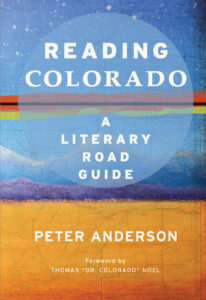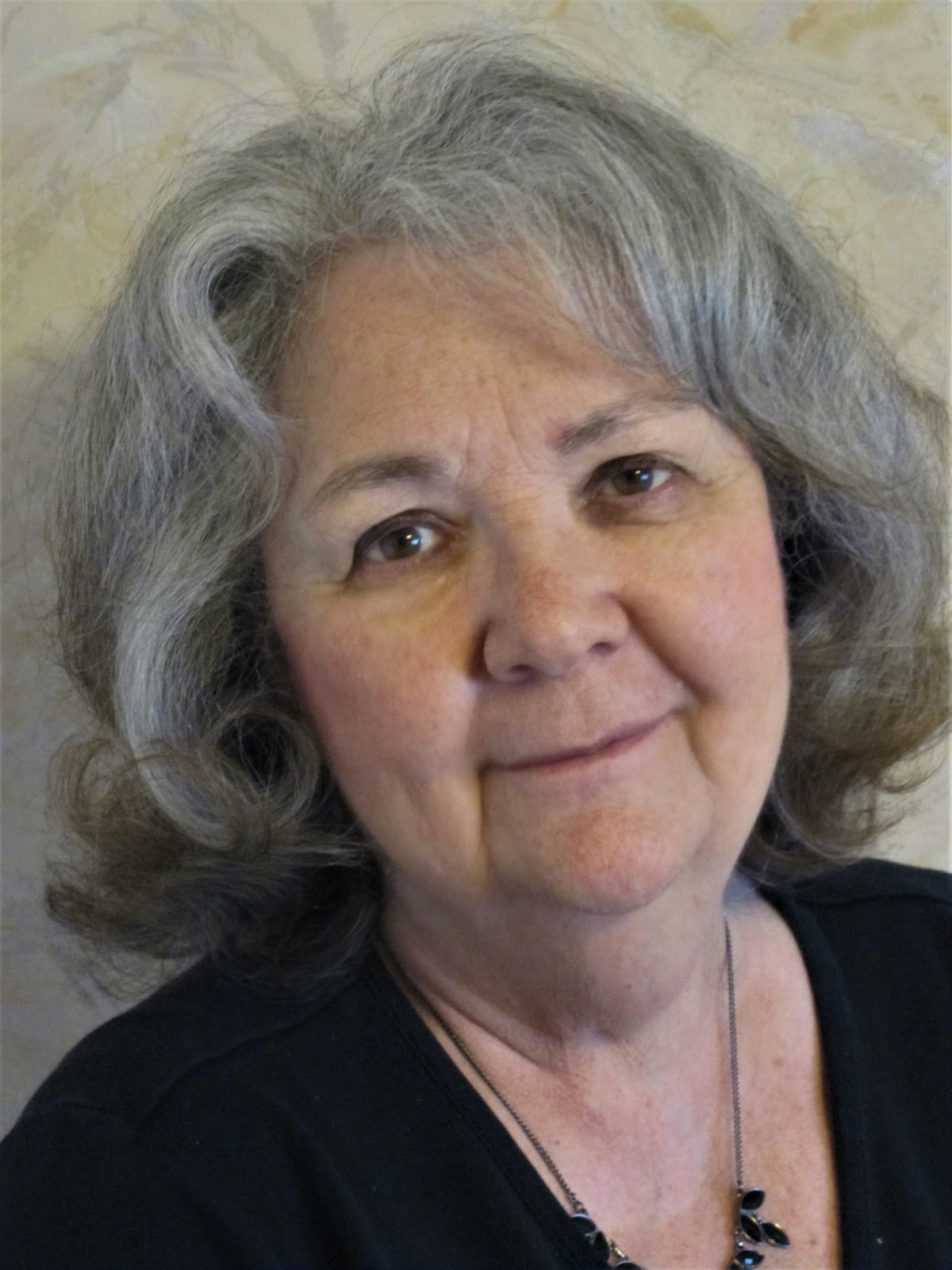Open your eyes and read about where you are
A literary Colorado road trip with author Peter Anderson
A literary Colorado road trip with author Peter Anderson
Reading a book about the place you are visiting brings the scene to life, and maybe even offers clues to exploring sites that might not have been on the original agenda.
Crestone-based author Peter Anderson thinks so. That’s one reason he created Reading Colorado: A Literary Road Guide, published in 2023 and the winner of a 2024 Colorado Book Award.
“If you can find good writers who know something about a place, it deepens your experience of that place. It deepens the map,” he said in a recent interview.

Peter Anderson
“Since I started writing, I’ve been interested in the relationship between place and the written word.”
A perfect example, he points out, is Isabella Bird’s A Lady’s Life in the Rocky Mountains, lending a real appreciation of how hard it was to visit that wild place, now known as Rocky Mountain National Park, 150 years ago.
“Books like that give us an insight we could not get any other way,” Anderson said. “Her experience in climbing Long’s Peak and her relationship with her guide are just fascinating. Her courage and ambition are unique.”
Writing the West
Though he was born and grew up in Boston and the northeast, Anderson’s writing roots run deep in Colorado. He came to Colorado Springs in 1974 to attend The Colorado College.
“That’s when I got hooked on the West and Western landscapes and the literature of the West,” he said.
After college, he did a stint as a park ranger and took “fun jobs” writing some national and state park pamphlets and information guides to places such as the St. Louis Arch, El Malpais in New Mexico and Canyonlands in Utah.
In 1983, Anderson began writing for a small town daily, The Mountain Mail, in Salida. He covered the Buena Vista area.
“Writing about a place helps a person be a more conscientious dweller in that place. More a part of it. A better citizen,” he believes.
He wrote feature stories about “trappers, circus people, rodeo clowns, miners, honky-tonk musicians, wildlife biologists, and late-night ski hill groomers among others,” he recalls in his bio.
Then he began writing those same types of stories as a stringer for the Pueblo Chieftain and the Denver Post, covering the Arkansas Valley, San Luis Valley and Four Corners area.
Anderson has authored a dozen children’s books on the cultural and natural history of the American West, including ones on the Pony Express, naturalist John Muir and a Sioux medical practitioner, Charles Eastman.
He has also taught writing for 20 years, 10 of those years at Adams State University in Alamosa.
Along the way, he produced other books, including Heading Home: Field Notes, a compilation of short essays, flash prose, and prose poems; and a collection of essays, First Church of the Higher Elevations, which explores the ecology of story, spirituality and landscape.
A foray into verse
In addition, he is a frequently published poet.
“When I think of the trajectory of my writing life, it began with journalism, morphed into more creative endeavors, and I kept pushing the creative edge a bit and … poetry seemed a natural next step,” he said. “It was really gradual.”
For the last few decades, he has been performing his poetic art in coffee houses, bars, libraries, colleges and other literary venues throughout Colorado with what he calls “a gang of high-country poets” called the River City Nomads.
Anderson lives in Crestone, on the edge of the Sangre de Cristo mountains. It’s a place he describes as “an eccentric mountain town full of spiritual seekers, old hippies and neo-Rastafarians, Buddhist monks, modem cowboys, retired bikers, former executives-turned-poets, ranchers, philosopher-plumbers, green-leaning realtors, artists, writers and musicians.”
In 2009, he edited Telling it Real: The Best of Pilgrimage Magazine, an anthology of poetry and nonfiction organized around the themes of story, place, spirit and witness. In 2015, he co-edited an anthology of Grand Canyon poems called Going Down Grand which was nominated for a Colorado Book Award.
In 2018, he launched the Crestone Poetry Festival, an annual gathering of southwestern poets. This year, it happens Oct. 17-20, a weekend gathering that includes readings, workshops and poets from all over the Southwest, but mostly Colorado and New Mexico.
“It’s an opportunity for poets to gather with other poets. It’s really a fun time,” he said.
Currently, he is working on several new projects: Riding the Wheel, a collection of prose poems, haiku and haibun, “a very geographical work that focuses on the Sangre de Cristos;” and a mystery novel he started eight years ago.
“It’s a missing person’s story set in a town not unlike Crestone,” he said. “I want to tell a good story, but also a story about a town like Crestone that reflects its region.”
A Colorado anthology
All of Anderson’s work seems to be rooted in a sense of place. That’s the basis for his latest project, Reading Colorado: A Literary Road Guide, an anthology of place-based writings published in 2023 and winner of a 2024 Colorado Book Award.
The book contains excerpts from the the best writers who reveal the essence of Colorado, according to Anderson’s standards.  Some are famous—Mark Twain, Wallace Stegner, Lowell Thomas and James Michener—and some are fairly obscure but talented.
Some are famous—Mark Twain, Wallace Stegner, Lowell Thomas and James Michener—and some are fairly obscure but talented.
“Take the San Luis valley for example,” he said. “A lot of writers here are known in the valley but not far beyond. I knew of some really good writing but [it’s] not especially well known.”
“Trudy Kretsinger, a farmer/rancher who lives in the valley, writes beautifully about it. Steve Voynick, who lives in Salida, is a terrific writer who writes primarily for gem and mineral magazines, has written some great books … about mining in Colorado. It’s just such darn good writing with a literary quality I really admire.”
Reading Colorado did not come together quickly or easily. Anderson worked on it off and on for 10 years, but more intently the last two years before it published.
It includes excerpts from works of fiction, nonfiction, historical writing, biography, poetry and other published work.
“It had to reveal something of interest about a place, be a narrative that includes something of interest or something that took place that made it noteworthy,” Anderson said. “It needed to include a description that allowed the reader to see it with fresh eyes.”
There were many more choices than he could include in one volume; he had to discard as much as he included, he said.
“I wanted each [selection] to say something significant about Colorado.”
He hung a map on the wall of his office and marked an X on the spots where he found appropriate passages representing that location. After that, “organizing the book geographically just seemed a natural choice.”
If you’re headed to Woodland Park, for example, you might want to sample Colorado Springs author Ann Zwinger’s Beyond the Aspen Grove, set in the location of her mountain home. Anderson chose it and the other excerpts for their literary quality and narrative strength as well as descriptive power, he said.
Anderson hopes that Reading Colorado enriches and enlightens the experience of readers who are both visiting and living here. One of his favorite writers, Wendell Berry, said — he’s paraphrasing—”you don’t know who you are unless you know where you are.”
Reading Colorado certainly illuminates that idea.
— For more information about the Crestone Poetry Festival, visit https://www.poemfest.com/
Click here for more from Linda DuVal.
